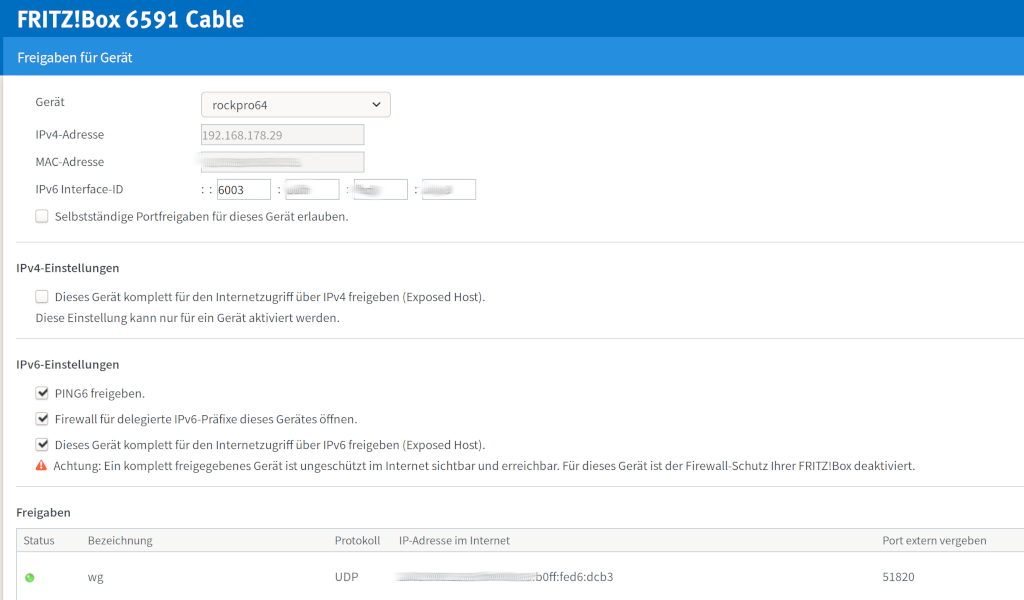Zwischenfazit August 2018
-
Seit meinem letzten Zwischenfazit hat sich viel getan.
Fangen wir mal beim Wichtigsten an, kann man sich das Board und das Zubehör von Pine64 bestellen? Ganz klares JA von mir und eine absolute Empfehlung. Ein Super Board, das natürlich immer noch nicht bis ins letzte zu Ende konfiguriert ist, aber ich bin mir zu 100% sicher, das Kamil da sehr gute Arbeit macht. Und das alleine - Respekt!
Hardware die ich getestet habe und funktioniert
- ROCKPro64 v2.0 (Preproduction)
- Kühlkörper
- ROCKPro64 v2.1
- PCIe NVMe Karte
- PCIe SATA Karte
- 32GB eMMC-Modul
- USB3-to-SATA Adapter
Diese Hardware ist funktionsfähig und wird von Kamil's Images gut unterstützt.
Hardware die ich getestet habe und noch nicht funktioniert
Software
Zwei Möglichkeiten haben wir im Moment.
Und, wer möchte kann auch noch Android dazu zählen, ich mach es nicht. Mich interessiert Android null. Im Winter wenn ich mal Langeweile habe, kann man evt. mal rein schauen

Diese Images habe ich hier in verschiedenen Konfigurationen 24/7 laufen, ohne ein Problem. Absolut stabil.
Konfig 1
- ROCKPro64 v2.0 4GB RAM
- PCIe NVMe Karte
- Samsung 960 EVO 256GB
- SD-Karte
Das Betriebssystem liegt auf der Samsung EVO, beim Booten wird die Karte als Root Device eingebunden. Leider können wir noch nicht mittels SPI von der NVMe SSD starten, das wäre noch praktischer. Aber, man weiß sich ja zu helfen, auch wenn es den ein oder anderen Nachteil hat. (Kernel-Updates)
Anleitung zum Booten von NVMe
Auf diesem ROCKPro64 läuft im Moment
rock64@rockpro64v2_0:~$ uname -a Linux rockpro64v2_0 4.4.132-1081-rockchip-ayufan-g50be7e64a779 #1 SMP Tue Jul 31 20:09:25 UTC 2018 aarch64 aarch64 aarch64 GNU/LinuxIch habe dort einen Webserver am Start mit
Kann man sehr schön mit arbeiten

Konfig 2
- ROCKPro64 v2.1 2GB RAM
- PCIe SATA Karte
- SD-Karte oder eMMC-Modul
- Samsung 860 PRO mit 256GB am USB3-to-SATA Adapter
Aktuell habe ich den u-boot in den SPI Speicher geflasht. Anleitung. Damit wird von der SSD gebootet, das klappt sehr gut aber leider im Moment nur an USB2. Da muss natürlich dringend USB3 her, Kamil ist informiert

Auf der SSD ist ein Image vom Kamil, aktuell nutze ich dort
rock64@rockpro64:~$ uname -a Linux rockpro64 4.4.132-1085-rockchip-ayufan-gad69573e2915 #1 SMP Tue Aug 7 11:42:08 UTC 2018 aarch64 aarch64 aarch64 GNU/LinuxDiese Konfiguration dient mir im Moment als Testplattform, um alles mögliche zu testen. Neue Images, neue Kernel usw.
Fazit
Im August 2018 kann man mit dem Board schon ganz gut leben, vorausgesetzt man nutzt so wie ich nur Headless Systeme. GPU und Desktop scheint im Moment noch eine sehr große Baustelle zu sein - wie erwartet. Das ich jetzt schon damit Server bauen könnte um diese zu nutzen, hätte ich erst für Ende des Jahres erwartet.
Mal wieder Zeit dem Kamil einen Kasten Bier zu spendieren. Kann der bestimmt gebrauchen


-
-
-
-
-
ROCKPro64 - Armbian - Boot Ausgabe ändern
Verschoben Armbian -
-
Release Empfehlung für Einsteiger
Verschoben Archiv -
ROCKPro64 - Der Bootvorgang
Verschoben Hardware

